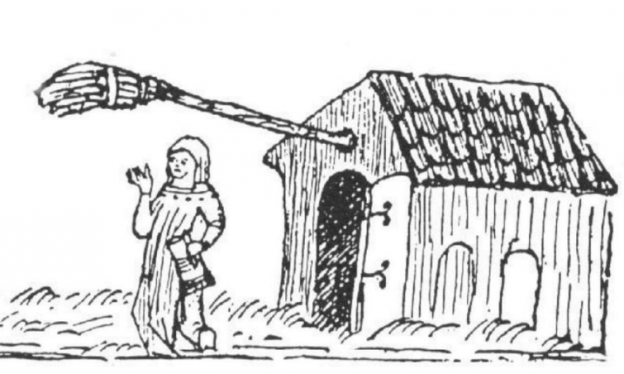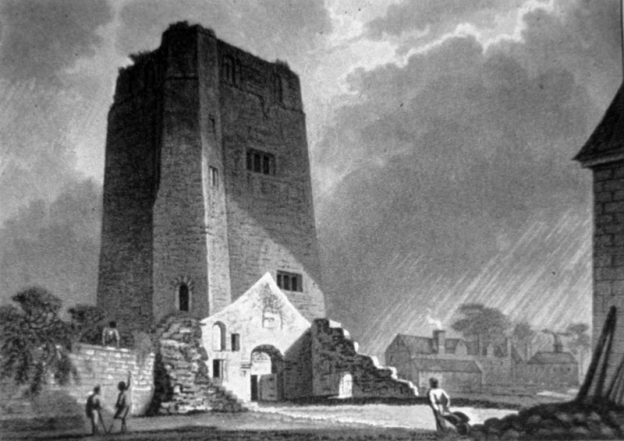Information provided by the OLHA (www.olha.org.uk)
1st – Henley-on-Thames – John Leighfield “From Gough to Google: The Development of Printed Maps of Henley”. King’s Arms Barn, King’s Road, 7:45pm.
2nd – Otmoor – Stephanie Dalley “The Hanging Garden of Babylon: The solution to an old problem”. Islip Village Hall, 8:00pm.
9th – Deddington – Trevor Rowley “Odo of Bayeux (and of Deddington)”. Windmill Centre, Hempton Road, 7:30pm.
9th – Wallingford – Gary Lock “Becoming Roman in Oxfordshire: excavations at Marcham/Frilford”. St Mary’s Church, 8:00pm.
10th – Banbury – Zoe Boden “Opus Anglicanum and the Steeple Aston Cope”. Banbury Museum, Spiceball Park Road, 7:30pm.
10th – Didcot – Bill King “Dad’s Underground Army”. Northbourne Centre, Church Street, 7:30pm.
10th – Wootton & Dry Sandford – Trevor Rowley “Oxfordshire Castles”. Wootton Community Centre, 7:30pm.
14th – Goring Gap – Judy Dewey “Wallingford Castle”. Goring Village Hall, 2:30pm.
16th – Bloxham – Bill King “Industrial archeology in your garage, shed and attic”. Jubilee Park Hall, Brickle Lane, 7:30pm.
17th – Longworth – Tony Hadland “Papists at the Manor: The Yates and Throckmortons of Buckland and Lyford in the Vale of the White Horse”. Southmoor & Kingston Bagpuize Village Hall, 7:30pm.
17th – Oxfordshire Gardens Trust – David Bradley “Lakes and pools in Oxfordshire and beyond”. Kellogg College, 62 Banbury Road, Oxford, 7:00pm.
17th – Sibfords – Julie Ann Godson “The Water Gypsy: how a Thames fishergirl became a viscountess”. Sibford Gower village hall, 8:00pm.
18th – Thame – Brian Lowe “Stained glass”. Church Barns, Church Road, 7:30pm.
21st – Adderbury – Richard O Smith “The Man with his Head in the Clouds”. Methodist Chapel School Room, Chapel Lane, 7:30pm.
21st – Bicester – Tim Healey “Drovers’ Roads in Oxfordshire and Beyond”. Clifton Centre, Ashdene Road, 7:30pm.
21st – Kennington – George Ross “The History of Kennington Parish Council 1936 – 2016”. Methodist Church, Upper Road, 7:45pm.
22nd – Enstone – Emily Roy “Waddesdon Manor”. Venue tbc, 7:30pm.
22nd – Hanney – Manfred Brod “The Abingdon ‘Monks’ Map”. War Memorial Hall, East Hanney, 8:00pm.
22nd – Sutton Courtenay – Tim Healey “Drove roads of Oxfordshire and beyond”. Village Hall, 7:30pm.
23rd – Dorchester – Malcolm Airs “Barns, Bridges and Bay Windows”. Dorchester Abbey Guest House, 7:30pm.
28th – Oxfordshire Family History Society – Tony Hadland “Pilgrimage to Plug Street” (Oxfordshire Family History Society 40th anniversary meeting). Exeter Hall, Oxford Road, Kidlington, 8:00pm.
December 2016
7th – Otmoor – Ben Ford (Oxford Archaeology) “The Westgate Project”. Islip Village Hall, 8:00pm.
8th – Banbury – Steve Kershaw “The Elgin Marbles”. Banbury Museum, Spiceball Park Road, 7:30pm.
8th – Oxfordshire Gardens Trust – Helena Chance “Tech Nirvana: why gardens at the office are good for you”. Kellogg College, 62 Banbury Road, Oxford, 7:00pm.
12th – Goring Gap – Penny Billyeald “Local war poets: Laurence Binyon & May Wedderburn Cannan”. Goring Village Hall, 2:30pm.
14th – Wallingford – Julie Ann Godson “The Water Gypsy: how a Thames fishergirl became a viscountess”. St Mary’s Church, 8:00pm.
19th – Kennington – Mark Davies “Daniel Harris – Oxford Castle Gaoler Extraordinaire”. Methodist Church, Upper Road, 7:45pm.


